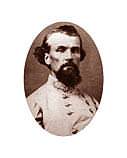Looking at your first-rate analysis of the Federalist Papers, I noted your reference to your comments at the foot of #43 and I believe that is relevant and I presume to quote your work at length titled, A Convention for Proposing Amendments below.
You really have done first-rate work.
I wish I had been exposed to it before I wrote my vanity but I'm also pleased that we seem to be on the same page when it comes to anticipating many of the problems implementing an Article V convention. I had to intuit my effort without the benefit of your work.
I was unable to open ALEC.
Here are your comments at Federalist Paper #43 for the benefit of any late coming readers to this thread:
At 85, Madison explains that there are two ways for amendments to the Constitution to be proposed to the states for ratification. The first is for two-thirds of each House of Congress to propose them. The second is for the legislatures of two-thirds of the states to request Congress to call a Convention for Proposing Amendments. Often referred to as a “Constitutional Convention”, it is viewed as the “nuclear option”.
Over the centuries, Congress has considered requests for a Convention to be fixed to a “single subject” standard, and this has foundation in contract law. According to this standard, the Convention is the agent of the states, and an agent may not go outside the purview of his agency agreement. The purview of a Convention is determined by the petitioning language generated by the states, and any attempt to address extraneous issues is forbidden. This is the traditional position.
An alternative position asserts that the Convention is a sovereign body during its life, and it may address any issue it wishes, whether authorized by the states or not. This is a decidedly minority position.
The safety valve is the requirement that the legislatures, or ratifying conventions, of three-fourths of the states ratify amendment proposals produced by a Convention in order for them to be placed in the Constitution. This is what would rein in a “runaway” Convention.
In 1965, the American Bar Association appointed a commission to determine if the Supreme Court’s “One Man/One Vote“ ruling would affect a Convention for Proposing Amendments. One commissioner thought that the Convention was such a primal act of the Republic that it would not, but he was overruled by the other 19 commissioners. The commission also came up with a draft bill to codify the “single subject” rule, to set a standard for the “freshness” of state petitions, to define the procedure for election of state delegates to the Convention, and to define the Convention’s initial rules of procedure.
In 1968 Sen. Everett Dirksen of Illinois introduced legislation matching the ABA’s draft bill, but it did not pass. Upon his death, Sen. Sam Ervin of North Carolina picked up the torch, and upon his retirement Sen. Orrin Hatch of Utah sponsored the bill. Its last introduction in 1991 failed to pass the Senate Judiciary Committee.
Only once did petitions for a Convention for Proposing Amendments reach the two-thirds threshold, and Congress found wiggle room to weasel out of calling a Convention.
In the early 20th Century, one of highest priorities of the Progressive Movement was to end the practice of state legislatures electing senators and pass that to the people via direct election. This had been suggested at the Constitutional Convention of 1787 by James Wilson, and Andrew Jackson had pushed for it in 1829. With many state legislatures functioning as wholly-owned subsidiaries of railroads, mines and other corporate interests, senators were often better known for the company they represented than the state.
The House had often passed an amendment to change this, but the Senate always balked. Then the state legislatures began demanding a Convention to introduce a constitutional amendment to effect this change. When the two-thirds threshold was reached, the Senate reacted by passing the 17th Amendment to the states for ratification.
The Senate had feared that a Convention would come up with an amendment that required the election of the entire Senate all at once under the new paradigm. When the vote by the state legislatures pushed the Senate into action, it came up with wording that permitted the change to go into effect starting with the election of 1914, requiring no new election for the entire Senate.
How did Congress avoid calling a Convention, even when the two-thirds threshold had been reached? Some petitions for a Convention stated that their conditions would be met if Congress passed such an amendment on its own. Once Congress acted, the petition was considered discharged, and it no longer counted for the calling of a Convention. Had those state petitions been worded otherwise, Congress would have been caught in a ticklish situation.
In two Supreme Court decisions, Dillon v. Gloss (1921) and Coleman v. Miller (1939), the Court ruled that if the states met the two-thirds threshold, Congress had no choice but to set a time and place for the Convention; it was a purely ministerial function for Congress. However, as those cases did not pertain directly to this issue, it has been alleged that the statements of the Court were dicta and not law. In other words, Congress could refuse to call a Convention, no court could order it to do so, and only the people, through the political process, could force Congress to do its duty by altering the makeup of Congress.
Even today, there is a lot of uncharted territory.
